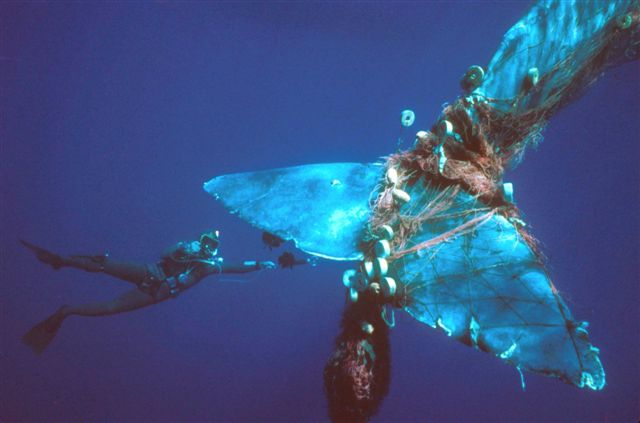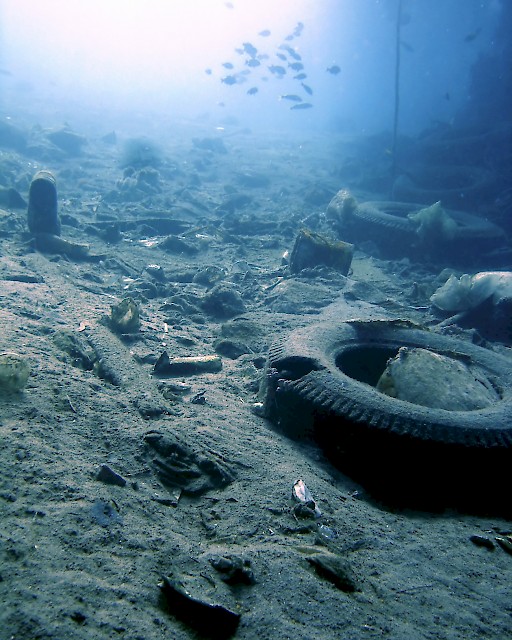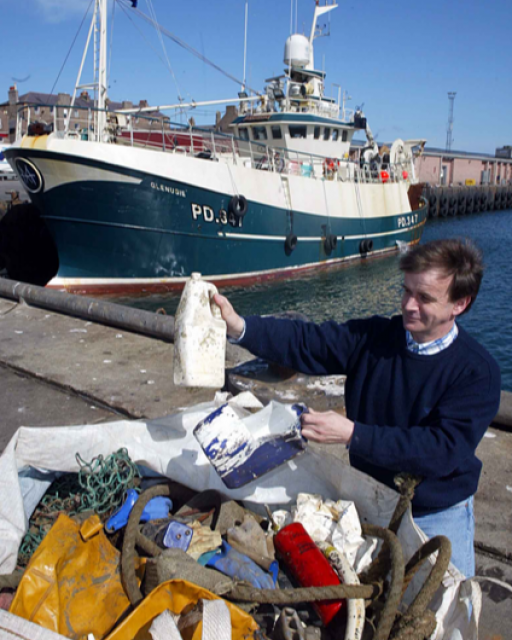Marine Litter
“Marine Litter” means any persistent, manufactured or processed solid material deliberately discarded or unintentionally lost on beaches, on shores or at sea. It includes materials transported into the marine environment from land by rivers, draining or sewage systems or winds.
Our latest assessments: Quality Status Report 2023
Briefing note for the thematic assessment
Abundance, Composition and Trends of Beach Litter: Beach litter levels remain high with plastic items predominating. Over the last six years, significant decreases in litter and plastic abundance have been observed at the OSPAR Maritime Area scale and in four OSPAR Regions. To substantially reduce marine litter, it is necessary to continue current efforts and take additional measures.
Composition and Spatial Distribution of Litter on the Seafloor: Seafloor litter is widespread across the area assessed; fisheries-related items and plastic materials predominate. The Bay of Biscay and the Iberian Coast had a higher probability of litter collected than both the Greater North Sea and Celtic Seas. In the Greater North Sea, the probability of litter collected has increased.
Marine Litter ingested by Sea Turtles: There is a high incidence of litter ingestion by sea turtles in the Bay of Biscay, Azores and Macaronesia, but with regional differences. Mean abundance of ingested plastics was 9,6, 16,3 and 16,3 pieces respectively. This new common indicator provides the baseline for further monitoring and evaluation of trends.
Plastic Particles in Fulmar Stomachs in the North Sea: Currently 51% of beached North Sea fulmars have more than 0,1g of plastics in their stomachs, exceeding the Fulmar Threshold Value (Fulmar-TV) of 10%. This reflects the abundance of floating litter and provides an indication of harm. The amounts of ingested plastics have decreased significantly in the period 2009 to 2018.
Production and consumption of plastics feeder report
Impacts of Marine Litter
Entanglement in, or ingestion of, marine litter can have negative consequences on the physical condition of marine species with over 900 different species documented as being affected. In the North Sea region during the period 2010-2016 95% of Northern Fulmars had plastic in their stomachs and 56% exceeded the 0.1 gram objective.

Ingestion of micro plastics is also of concern as it may provide a pathway for transport of harmful chemicals into the food web. Additionally, marine litter is known to damage and degrade habitats (e.g. in terms of smothering) and to be a possible vector for the transfer of alien species.
Marine Litter also has significant economic cost for a range of marine industries, such as: aquaculture, fisheries, harbours, industrial seawater users, marinas, municipalities, power stations, rescue services, shipping and water authorities. These costs can include cleaning, blockages, entanglement and contamination. The social impacts of marine litter relate to the ways in which marine litter affects people’s quality of life and include reduced recreational opportunities and loss of aesthetic value.
Monitoring and Assessment
OSPAR currently assesses beach litter, seabed litter, plastic particles in fulmar stomachs and, from 2019, litter ingested by sea turtles indicators, as part of its monitoring and assessment programme. These allow the abundance, trends and composition of marine litter in the OSPAR Maritime Area to be determined for different marine compartments (floating, seafloor and coast).
OSPAR is currently also working to develop new indicators, including microplastics in sediments. The microplastics indicator will address levels in marine sediments and will cover the whole OSPAR Maritime Area.
OSPAR action plan for marine litter
In 2014 OSPAR agreed to develop a Regional Action Plan for Marine Litter along with an implementation plan, in order to achieve its objective to significantly reduce amounts of marine litter. The RAP focused on both sea-based and land-based sources of litter, as well as considering removal actions and education and outreach. Implementation of the 2014 RAP-ML was completed in June 2021. At that point OSPAR Contracting Parties had completed 25 out of the 32 collective actions; 3 were still in progress and 4 had been set aside. An extensive evaluation of the impacts and effectiveness of the 2014 RAP-ML was published in 2021.
In 2022 OSPAR adopted a second RAP-ML (RAP-ML 2) which sets out the policy context for OSPAR’s work to address marine litter within the North-East Atlantic and directly contributes to delivering the marine litter objectives of the North-East Atlantic Environment Strategy 2030. The RAP-ML 2 describes priority thematic areas and defines key actions where the OSPAR Commission can best contribute to tackling this ubiquitous challenge.
ICG Marine Litter
OSPAR's work on Marine Litter is coordinated through the Intersessional Correspondence Group on Marine Litter (ICG ML)


